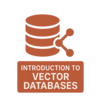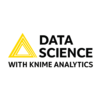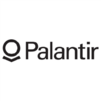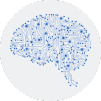
Dive into the realm of big data with our Python for Big Data Analytics course. Learn to leverage Python’s powerful libraries such as PySpark and Hadoop to analyze vast datasets efficiently. The course covers data manipulation, visualization, and big data processing techniques, preparing you to execute large-scale data strategies. This practical, project-based approach ensures you can implement your skills in real-world scenarios, making you a valuable asset in the data-driven industry.
Data Science with Python Interview Questions Answers - For Intermediate
1. What is a confusion matrix in machine learning?
A confusion matrix is a table used to evaluate the performance of a classification model on a set of test data for which the true values are known. It helps visualize the accuracy of a classifier by comparing the actual target values with those predicted by the model, classifying predictions into true positives, true negatives, false positives, and false negatives.
2. Discuss the different types of joins in Pandas and their use cases.
Pandas support several types of joins similar to SQL, including:
- Inner Join: Returns only the rows that match in both DataFrames.
- Outer Join: Returns all rows from both DataFrames, matches records from both sides where available, and fills in NaNs for missing matches.
- Left Join: Returns all rows from the left DataFrame, and the matched rows from the right DataFrame; NaNs are filled in where there is no match.
- Right Join: Returns all rows from the right DataFrame, and the matched rows from the left DataFrame; NaNs are filled in where there is no match.
3. What are decorators in Python, and how are they used?
Decorators are a design pattern in Python that allows a user to add new functionality to an existing object without modifying its structure. They are usually called before the definition of a function you want to decorate. For example, @staticmethod is a decorator that transforms a method into a static method.
4. How does Python support multiple inheritance?
Python supports multiple inheritance, allowing a class to inherit from multiple parent classes. This can be useful for mixing together functionalities from several classes. Python’s method resolution order (MRO) determines how to apply the properties and methods from parent classes.
5. Explain the differences between deep learning and machine learning.
Machine learning encompasses a range of computational methods that use algorithms to parse data, learn from them, and make determinations or predictions about future events. Deep learning is a subset of machine learning that structures algorithms in layers to create an "artificial neural network" that can learn and make intelligent decisions on its own. Deep learning requires substantial data and computational power compared to traditional machine learning algorithms.
6. Describe the seaborn library and its advantages for data visualization.
Seaborn is a Python data visualization library based on Matplotlib. It provides a high-level interface for drawing attractive statistical graphics. Seaborn simplifies the creation of complex visualizations like heat maps, time series, and violin plots. It's integrated well with Pandas and provides a better default style and color palette.
7. What is cross-validation in machine learning?
Cross-validation is a resampling procedure used to evaluate a model if the data set is limited in size. The goal is to test the model’s ability to predict new data to generalize to an independent dataset. One of the most common methods is the k-fold cross-validation, where the dataset is randomly split into k sub-samples used for training and validation.
8. How can you handle categorical data in Python?
Categorical data can be managed using techniques such as one-hot encoding or label encoding. One-hot encoding creates new columns indicating the presence of each possible value from the original column. Label encoding converts each value in a column to a number. Libraries like Pandas and Scikit-learn offer built-in functions (get_dummies and LabelEncoder) for these transformations.
9. What is the role of the pickle module in Python?
The pickle module implements binary protocols for serializing and de-serializing a Python object structure. It’s used to save machine learning models or other data structures to a file, allowing to quickly load them without retraining or reconstructing them.
10. Discuss the importance of the axis parameter in NumPy.
The axis parameter in NumPy specifies the dimension of the array that will be collapsed, rather than the dimension along which the operation will be applied. For instance, applying a summation operation along axis=0 will collapse the rows, resulting in a sum for each column.
11. Explain the differences between supervised and unsupervised learning.
Supervised learning algorithms are trained using labeled data, where the input and the output are known, and the model learns to map the input to the output. Unsupervised learning, however, involves training a model using information that is neither classified nor labeled, and the model endeavors to infer the underlying structures from the input data.
12. How do you use array slicing in NumPy?
Array slicing in NumPy is similar to Python list slicing. For instance, array[start:stop:step] extracts a portion of an array according to the specified start, stop, and step values, which is crucial for data manipulation and analysis.
13. What are the principal components of PCA, and why are they important?
Principal Component Analysis (PCA) is a dimensionality reduction technique that transforms a large set of variables into a smaller one that still contains most of the information in the large set. The principal components are the directions in the data that maximize the variance—these are crucial because they allow us to understand the underlying structure of the data and reduce the dimensionality without losing significant information.
14. Describe how regularization is used in machine learning.
Regularization techniques, such as L1 and L2 regularization, add a penalty on the size of coefficients to prevent overfitting by discouraging overly complex models. This helps in enhancing the model’s generalization capabilities on new, unseen data.
15. What is a Series in Pandas, and how does it differ from a data frame?
A Series is a one-dimensional array-like object containing an array of data (of any NumPy data type) and an associated array of data labels, called its index. Unlike a data frame, which can have multiple columns, a Series is a single-columned structure. Each column in a data frame can be considered a Series.
Data Science with Python Interview Questions Answers - For Advanced
1. Explain the concept of Natural Language Processing (NLP) and its common applications.
NLP is a field of artificial intelligence that focuses on the interaction between computers and humans through natural language. The goal of NLP is to enable computers to understand, interpret, and generate human language in a valuable way. Common applications of NLP include sentiment analysis, machine translation, speech recognition, chatbots, and automated summarization. Techniques used in NLP range from simple statistical and machine learning methods to complex deep learning models.
2. What are the implications of using transfer learning in deep neural networks?
Transfer learning involves taking a pre-trained neural network and adapting it to a new, but similar problem. This is particularly useful in deep learning, where training a model from scratch requires substantial data and computational resources. Transfer learning can dramatically decrease the required training time, improve model performance, especially when the new task has relatively little data available, and often leads to better generalization.
3. Discuss the importance of model validation in data science projects.
Model validation is crucial in data science to ensure that the model performs well on new, unseen data, reflecting its ability to generalize. Common validation techniques include cross-validation and the train/validation/test split. Validating a model helps in identifying issues like overfitting or underfitting, ensuring the model's reliability and robustness before deploying it in production environments.
4. How do hyperparameter tuning techniques like Grid Search and Random Search work?
Hyperparameter tuning is a crucial step in optimizing machine learning models. Grid Search systematically explores a specified subset of hyperparameters, training a model for each combination and recording the model performance for each. This method, while comprehensive, can be computationally expensive. Random Search, on the other hand, selects random combinations of hyperparameters to train the model, which reduces the computational burden and can lead to equally good, if not better, results by covering a broader range of values.
5. Explain the use of A/B testing in data-driven decision-making.
A/B testing, also known as split testing, is a statistical method used to compare two versions of a variable to determine which one performs better in a controlled environment. Its primary use is to validate hypotheses and make informed decisions based on data. In the context of web development, for instance, two different webpage layouts (A and B) might be shown to different segments of website visitors at the same time to determine which one leads to better user engagement or sales. A/B testing is essential for eliminating guesswork and making decisions that can significantly impact user experience and business profitability.
6. Explain the Bias-Variance Tradeoff in machine learning.
The variance tradeoff is a fundamental concept that describes the balance between the error introduced by the bias and the variance in a machine learning model. Bias refers to the error due to overly simplistic assumptions in the learning algorithm, which can lead to underfitting. Variance refers to the error due to excessive complexity in the learning model, leading to high sensitivity to high degrees of variation in the training data, which can cause overfitting. Ideally, one seeks to minimize both bias and variance, achieving a model that accurately captures the underlying patterns of the data while generalizing well to unseen data.
7. Discuss the importance and challenges of feature engineering in building predictive models.
Feature engineering is the process of using domain knowledge to select, modify, or create new features from raw data, which significantly impacts the performance of machine learning models. The main challenge in feature engineering is determining which features are the most predictive and how they can be transformed to optimize the model's performance without introducing noise. Effective feature engineering can improve model accuracy, reduce computational complexity, and lead to more robust models. However, it requires substantial domain expertise and iterative testing.
8. What is the role of the ROC curve and AUC in evaluating classifiers?
The Receiver Operating Characteristic (ROC) curve is a graphical plot used to show the diagnostic ability of a binary classifier system as its discrimination threshold is varied. The Area Under the Curve (AUC) represents the degree or measure of separability. It tells how much the model is capable of distinguishing between classes. Higher AUC values indicate better model performance. The ROC curve and AUC are particularly useful for evaluating models on imbalanced datasets, as they are insensitive to changes in class distribution.
9. How do Recurrent Neural Networks (RNNs) differ from traditional neural networks?
Recurrent Neural Networks (RNNs) are a class of neural networks that are pivotal in processing sequences, where the output from previous steps is used as input for the current step. Unlike traditional neural networks, which assume all inputs (and outputs) are independent of each other, RNNs are characterized by their "memory" as they capture information about what has been processed so far. This makes them ideal for tasks like speech recognition, language modeling, and time series forecasting. However, RNNs are also prone to problems like vanishing and exploding gradients, which can make training challenging.
10. Explain the concept and applications of Time Series Analysis in data science.
Time Series Analysis involves analyzing time-ordered data points to extract meaningful statistics and characteristics of the data. It is used widely in economics, business, finance, and environmental science to forecast future trends based on past data. The main challenge in time series analysis is identifying the underlying patterns such as seasonality, trend, and cyclical movements in the data. Methods like ARIMA, Seasonal Decomposition, and Exponential Smoothing are commonly used. Applications include economic forecasting, stock market analysis, and demand forecasting.
11. What are Generative Adversarial Networks (GANs) and their role in machine learning?
Generative Adversarial Networks (GANs) are an innovative class of artificial neural networks used in unsupervised machine learning, implemented by a system of two neural networks contesting with each other in a zero-sum game framework. This technique can generate new data instances that resemble your training data. For example, GANs can be used to generate realistic photographs that look authentic to human observers. They are widely used in image generation, video generation, and voice generation applications.
12. Discuss how clustering algorithms can be evaluated.
Evaluating clustering algorithms is challenging because it often lacks a ground truth to compare against. However, metrics like the Silhouette Score, Calinski-Harabasz Index, and Davies-Bouldin Index can provide insights into the effectiveness of the clustering by measuring the distance between clusters and the dispersion of points within clusters. These metrics help in determining the optimal number of clusters and assessing the quality of the clustering, making them essential for ensuring meaningful segmentation and pattern discovery in datasets.
13. What is the importance of data cleaning in data science projects?
Data cleaning is a critical step in the data science process because it directly impacts the quality of the insights you can derive from your data. It involves handling missing values, correcting errors, standardizing formats, and removing duplicates. Effective data cleaning ensures accurate, complete, and consistent data, which leads to better, more reliable, and more robust analytics. Neglecting data cleaning can lead to skewed results, which can mislead decision-making processes.
14. Explain the concept of Outlier Detection and its significance in datasets.
Outlier detection refers to the method of identifying data points that deviate significantly from the majority of the data. It is significant because outliers can skew and mislead the training process resulting in longer training times, less accurate models, and ultimately poorer results. Outlier detection can be performed using various statistical, probabilistic, and machine learning methods, and is crucial in fraud detection, network security, and fault detection applications.
15. Discuss the role of Python in Big Data Analytics and its integration with Hadoop.
Python is increasingly used in big data analytics due to its simplicity and powerful libraries like Pandas, NumPy, and PySpark. Python's integration with Hadoop is facilitated through PySpark, which allows Python to be used on the Apache Spark platform. This integration enables data scientists to write Python scripts to process data at scale, leveraging Spark’s capabilities for handling distributed data. Python’s versatility and rich ecosystem make it an excellent tool for developing complex data analysis pipelines that require integration with big data technologies.
Course Schedule
| Dec, 2025 | Weekdays | Mon-Fri | Enquire Now |
| Weekend | Sat-Sun | Enquire Now | |
| Jan, 2026 | Weekdays | Mon-Fri | Enquire Now |
| Weekend | Sat-Sun | Enquire Now |
Related Courses
Related Articles
- Top 10 Artificial Intelligence Technologies
- What Can You Learn from Primavera Unifier Admin Training?
- Everything You Need to Know About Apache Cassandra in 2025
- Oracle Primavera Cloud - Schedule Management: From Complexity to Clarity
- Innovative Features of AVEVA E3D Equipment for Advanced Plant Design
Related Interview
Related FAQ's
- Instructor-led Live Online Interactive Training
- Project Based Customized Learning
- Fast Track Training Program
- Self-paced learning
- In one-on-one training, you have the flexibility to choose the days, timings, and duration according to your preferences.
- We create a personalized training calendar based on your chosen schedule.
- Complete Live Online Interactive Training of the Course
- After Training Recorded Videos
- Session-wise Learning Material and notes for lifetime
- Practical & Assignments exercises
- Global Course Completion Certificate
- 24x7 after Training Support















 Join our Live Instructor-Led online classes delivered by industry experts
Join our Live Instructor-Led online classes delivered by industry experts